Creating varieties that are tolerant to drought and water stress is currently a high priority for breeders, including the wheat and beet breeders at Florimond Desprez. Combating drought is part of an on-going agro-ecological approach. So, how can plant breeding provide solutions to this problem?
What are the different types of drought?
‘Drought’ defines the state of an environment facing a significantly prolonged period of severe water shortage.
There are three common types of water stress:
- Early stress: The plant is subjected to drought at the beginning of its development.
- Continuous stress: The plant is subjected to drought over a prolonged period of time.
- Late stress: The drought occurs at the end of the plant’s development.
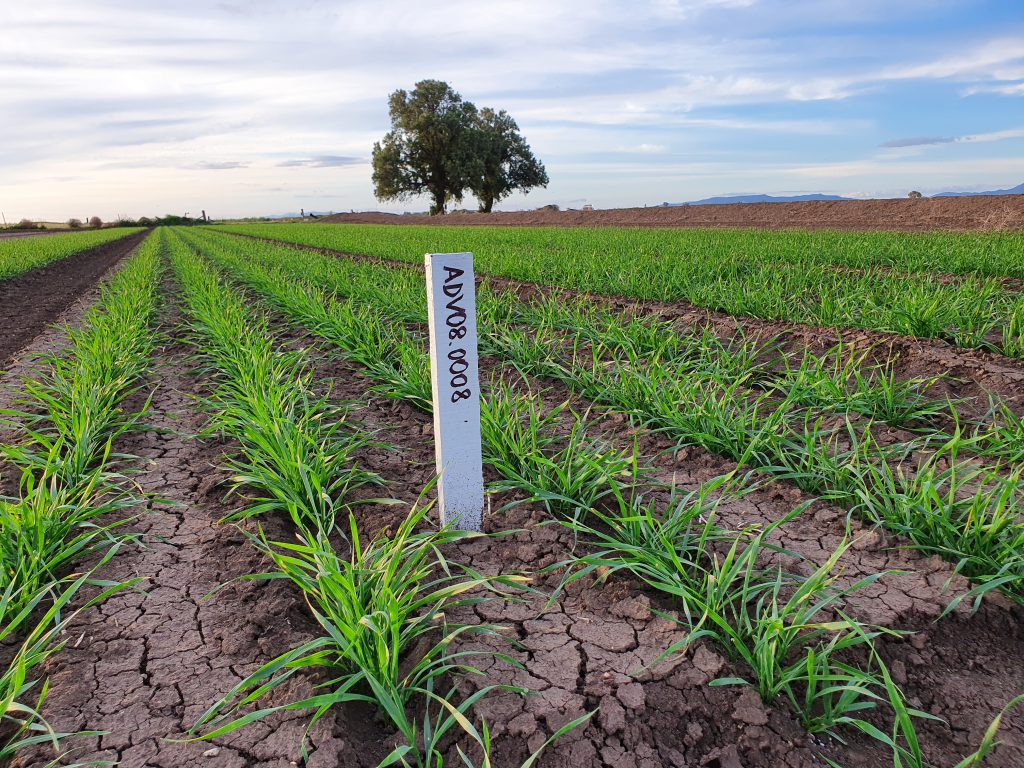
What are the causes and consequences of droughts?
Droughts are often associated with intense heat or high irradiance, both of which can be harmful to plants. The lack of rainfall also leads to nutrient deficiency, or nutrient toxicity, because nutrients are not sufficiently diluted in the soil.
However, it should be noted that intense heat is not always the cause of a drought, in particular in the case of irrigated crops, although the consequences can be just as disastrous, because an intense heatwave will destroy the fertility of a well irrigated plant.
All these factors are taken into consideration when breeding plants, in order to develop varieties that are more resistant to drought and the effects of drought.
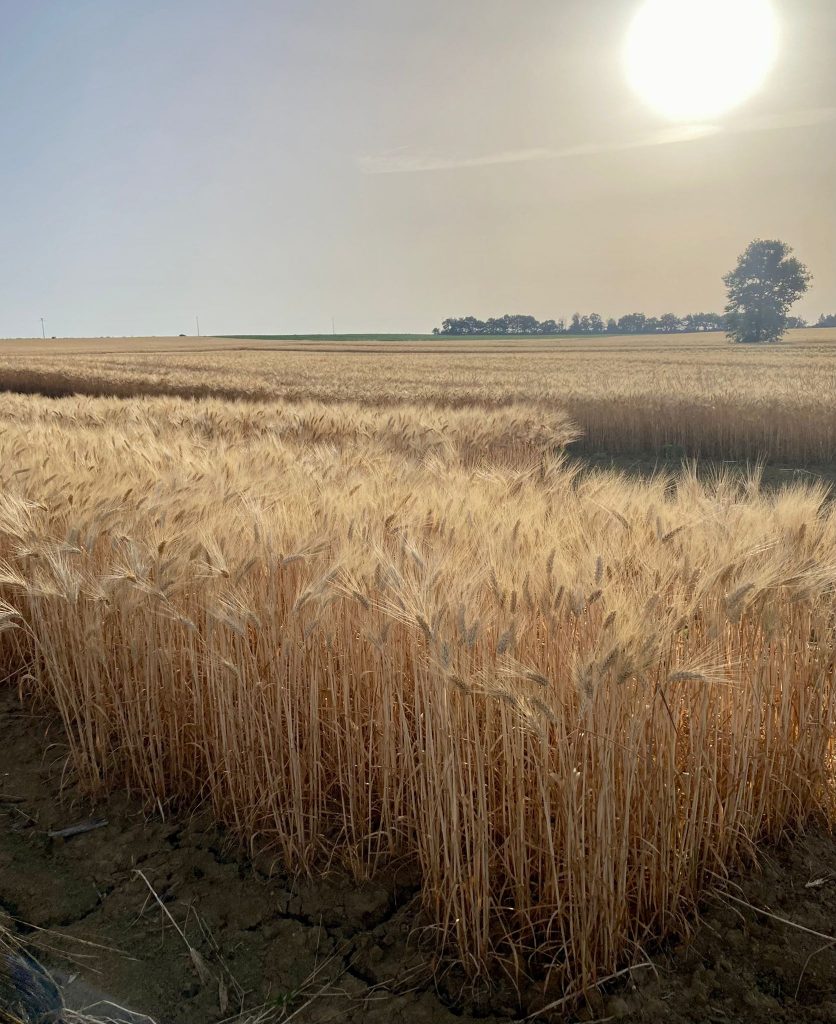
Wheat
What are the effects of drought on the plants?
With common wheat, for example, drought will have a different impact on the crop depending on the development stage of the plant.
If there is a drought at the time of sowing – at the seedling stage – this will result in a lack of germination and the loss of the plant. Spring is a key time for the wheat crop. If it is a dry spring, this will have a serious impact on the development of the wheat and its yield. The anthesis (flowering) stage is also a critical stage, right up until the grain develops. A lack of water during this stage can also have a serious impact and affect the wheat yield.
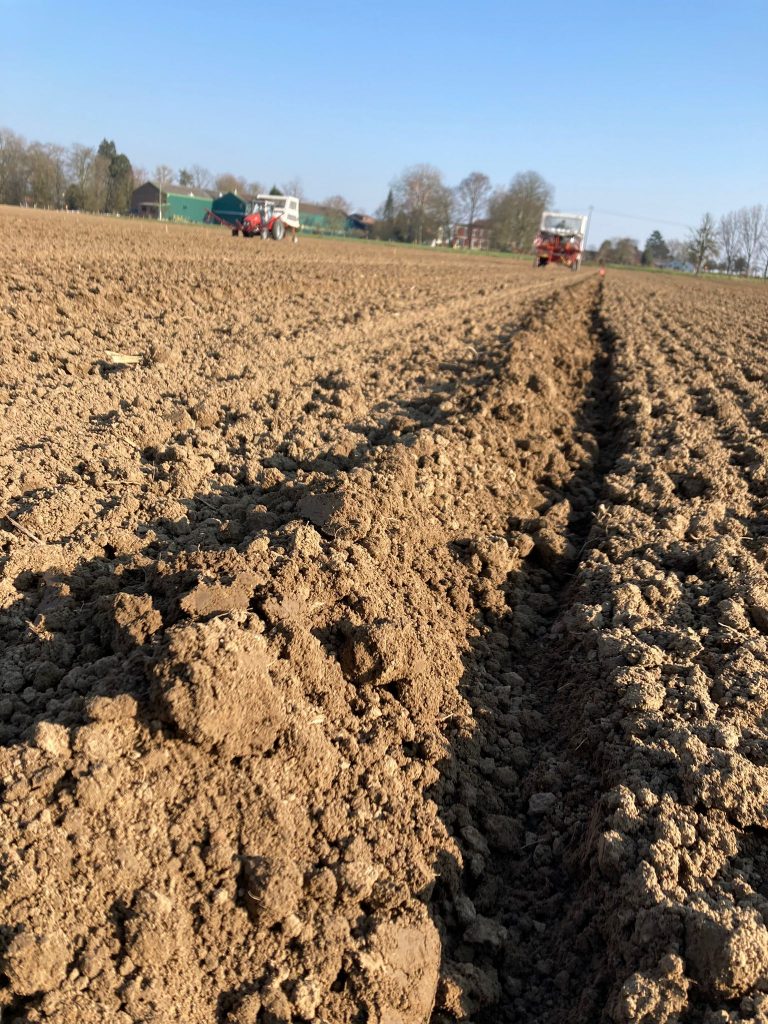
In 2013, Arash Nezhadahmadi compiled a table of the various effects of water stress on wheat:
Are there any varieties that are naturally tolerant to drought?
In the case of wheat, it can be noted that the most recent varieties are generally more tolerant to drought. Breeders choose lines according to their behaviour in specific climatic conditions. As a breeding cycle lasts between eight and ten years, this makes it possible to choose the best breeding lines based on various criteria, including drought, if there is at least one period of drought during the relevant breeding period.
The scientific literature specifies a multitude of genes of interest relating to water stress. However, there are in fact few varieties that are naturally tolerant to drought. Turning to exotic varieties is one avenue of research that can be pursued: For example, there are some Australian varieties that are particularly interesting in terms of drought resistance. These varieties do not necessarily have the best yield and are not adapted for our growing areas, but the material is interesting for cross-breeding.
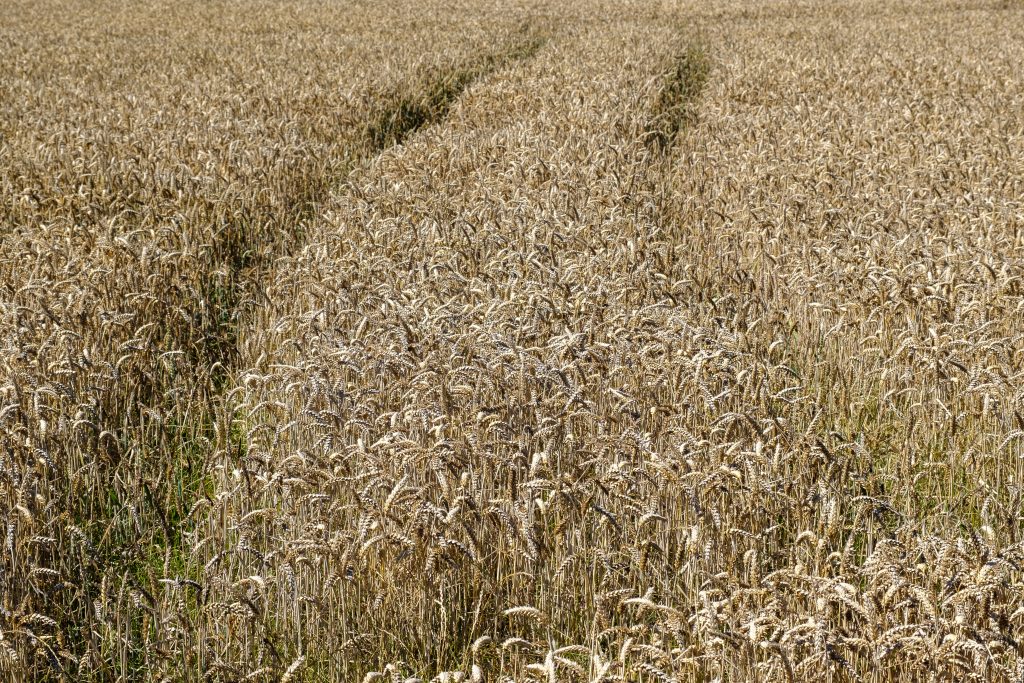
Is there a drought gene for wheat?
The French BreedWheat programme was a 10-year national programme that aimed to identify the genetic basis of wheat based on certain criteria, including drought tolerance. This confirmed what many researchers had already established: Not just one gene, but no less than 20 chromosomal regions are responsible for drought tolerance!
This programme continues to run within the framework of FSOV projects, putting this knowledge to practical use.
The wheat production cycle is a long cycle, so several genomic regions are involved at different stages of development. Furthermore, in the event of water stress, several plant functions are affected: rooting, leaf surface, stomatal opening etc.
Two different research goals have been identified: the first is to build up resistance to several stresses, because each gene has a more or less important effect. There are many low-effect genes, so it is important to focus on genes with additive effects and combining them to achieve a higher level of drought tolerance. There are also a large number gene regulatory factors at play in this tolerance. The second goal is to identify the stages during which water stress has the greatest impact and to adjust breeding strategies accordingly: for example, if water stress is more prevalent at the end of the wheat production cycle, post-flowering, we will need to breed those lines that perform better during this stage under water stress conditions.
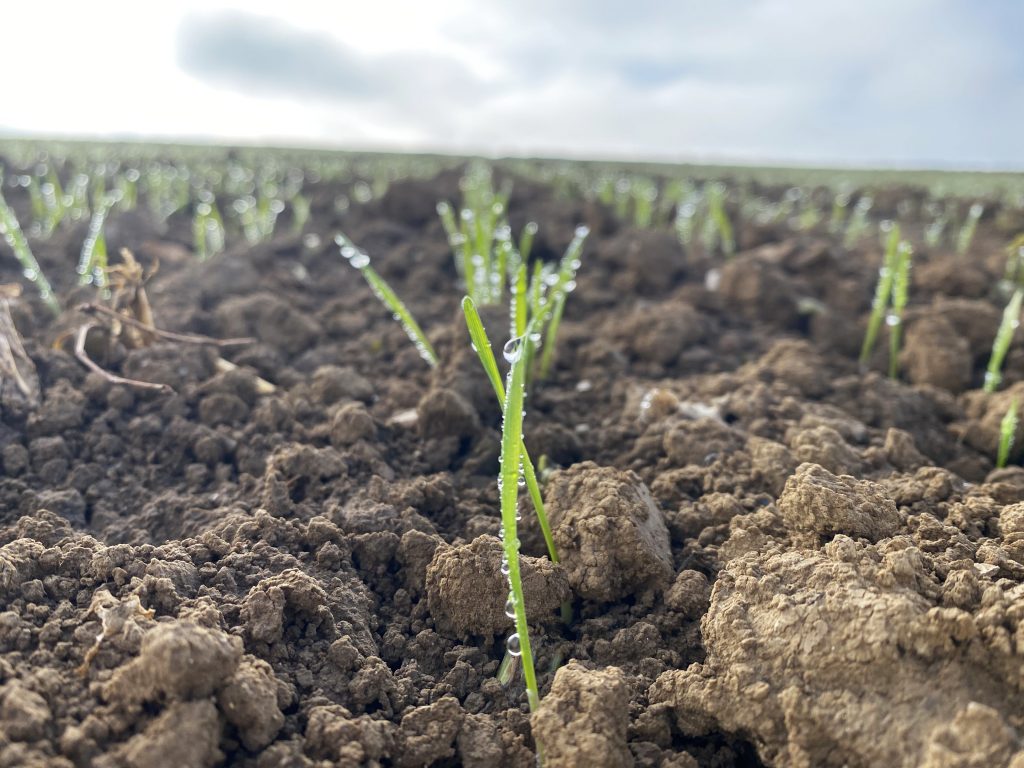
How to breed drought-tolerant wheat varieties
The approach to breeding drought-tolerant wheat varieties widely adopted in recent years is to develop an avoidance strategy: Material with a critical grain maturation phase that does not coincide with a period of frequent drought at the growing location is bred. These varieties mature earlier, and are therefore less affected by drought, because they are past the development stage when the drought occurs.
The breeders’ aim is therefore to breed plants with a more advanced, more functional root system, and to limit evapotranspiration in as far as possible. They can also attempt to create tolerance to dehydration by promoting stomatal closure, or by having a more vertically oriented flag leaf to limit exposure to sunlight.
There are therefore several criteria that need to be analysed and several genomic regions to be studied when it comes to drought tolerance.
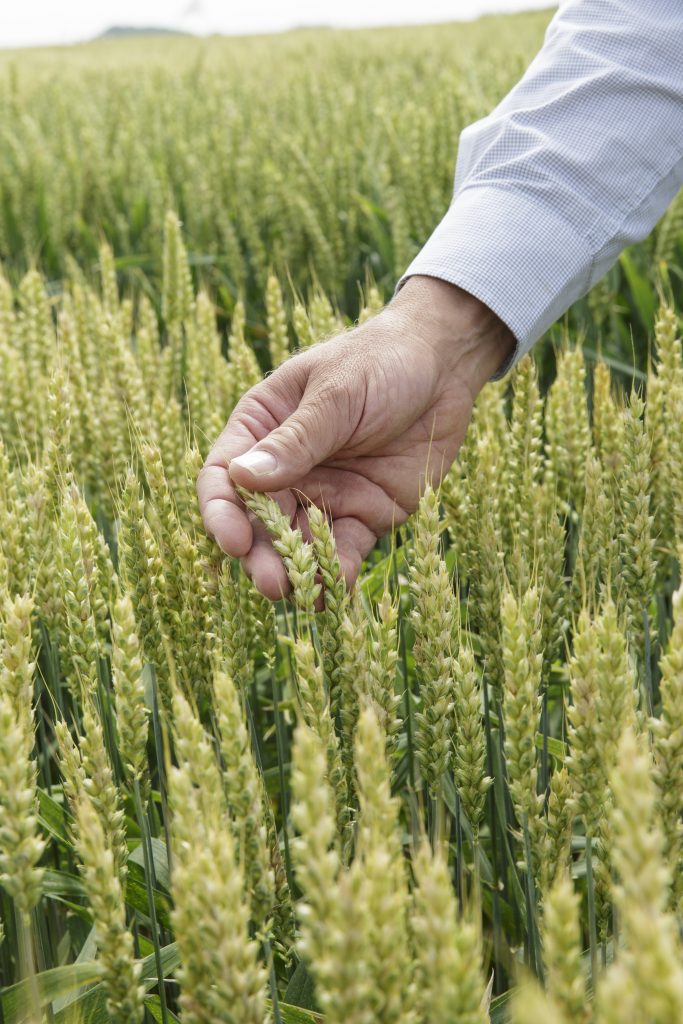
What techniques can be used to accelerate the breeding process for drought-tolerant varieties?
In addition to traditional cross-breeding strategies, other tools are available to breeders, notably New Genomic Techniques (NGTs). This very new technique is a kind of microsurgery that enables a DNA sequence to be modified in order to see the effect of this modification on a given trait. This makes it possible, for example, to confirm or refute the role of QTLs or genes, such as those identified within the BreedWheat programme. The material resulting from these techniques is currently difficult to market in Europe. However, it remains one of a number of tools for breeders, to be used wisely and in moderation.

Beet
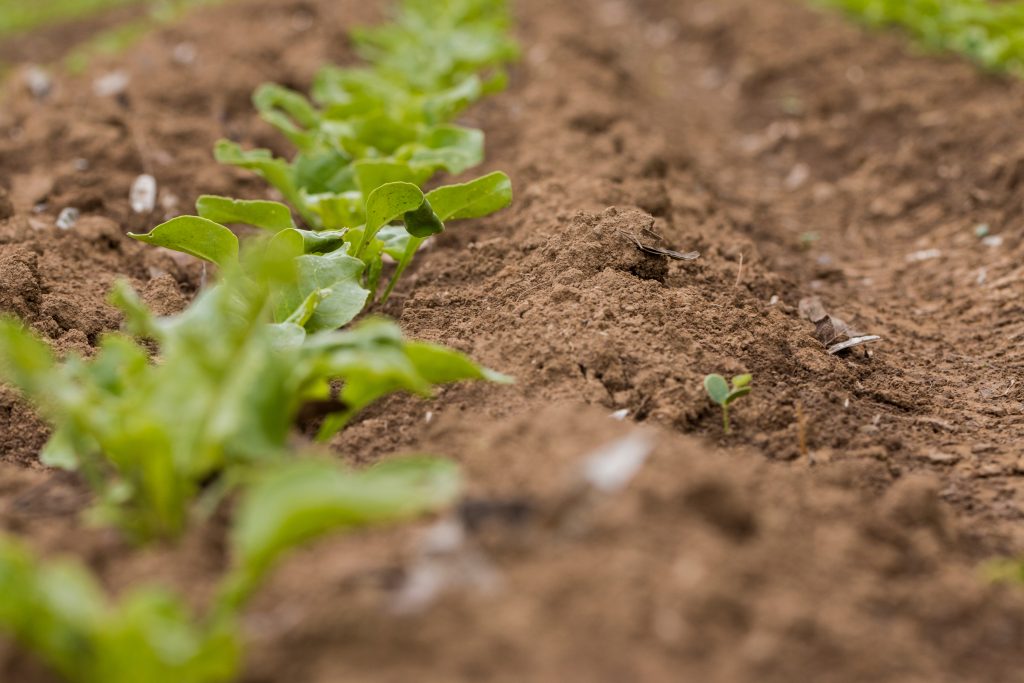
What about drought-tolerant beet varieties?
Beet is a summer plant that adapts to dry conditions more easily than wheat. However, high water stress will cause the plant to turn yellow and result in a lower yield. Less research has been conducted by scientists into the effects of drought on beet, because it is a less widely cultivated species. At Florimond Desprez, beet is a very important species, so our breeding programmes include evaluating drought tolerance.
New technologies like drones enable high-throughput phenotyping to be carried out and the individuals the best adapted to drought to be identified. The images captured at different stages of beet development are then analysed to identify plants with a tolerance to drought.
The same techniques as for wheat (in particular NGTs) are used to identify genes of interest in relation to water stress and to create new sources of tolerance.
In conclusion, it is clear that plant breeding will be one of the solutions to the problem of water stress. Thanks to technological advances, it is now possible to create a functional drought for testing using, for example, mobile greenhouses. It is also possible to test promising material in locations where drought and water stress is relatively common and, off season, in other countries or hemispheres.
It is important to remember that choosing the right variety must be part of a more global agronomic approach. For example, the previous crop may affect the drought tolerance. In the case of wheat, a previous crop of peas can have a positive effect.
Drought and water stress are highly topical issues, and as such have become priorities for the scientific community and breeders. However, seeking to develop varieties adapted to a particular soil would seem a more sensible approach. A great deal of external factors can affect drought tolerance. There is no such thing as a miracle variety!





